Primitive Methodist Chapel
Long Drove / Station Road
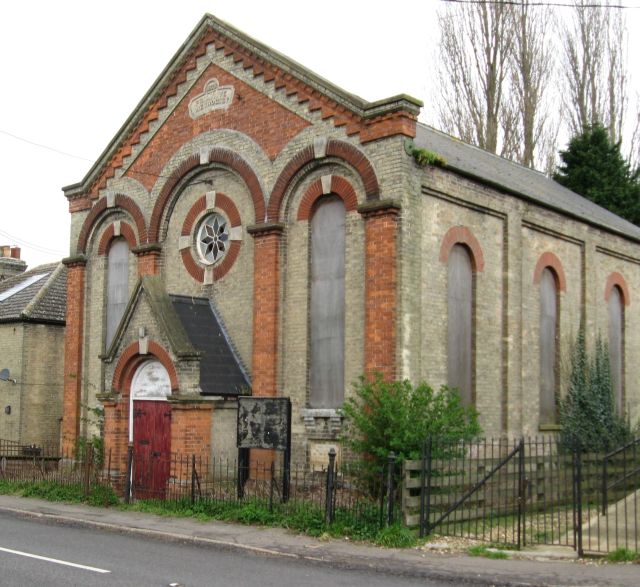
The Primitive Methodists movement was founded in 1810. The name is meant to indicate they were conducting themselves in the way of Wesley and the 'original' Methodists.
Their chapel at Ten Mile Bank was built in 1878. Seen here all boarded up, it's hard to believe there was formally a time when this building would have seen large congregations.
1844 & 1878
White's directory of 1883 states the Primitive Methodist chapel at Ten Mile bank was erected in 1878 (replacing an existing one erected in 1844) at a cost of £863 and has sittings for 230 people.
1881
A newspaper article in the People's Weekly Journal, June 1881, details a service and celebration of the anniversary of the Sunday school. It mentions amusements were held in a field lent by Mr Rose. Could Mr Rose being residing in Wellington house by 1881? There seems to be a tradition of occupiers of Wellington house lending a field for the school children to use before the current school playing field existed.
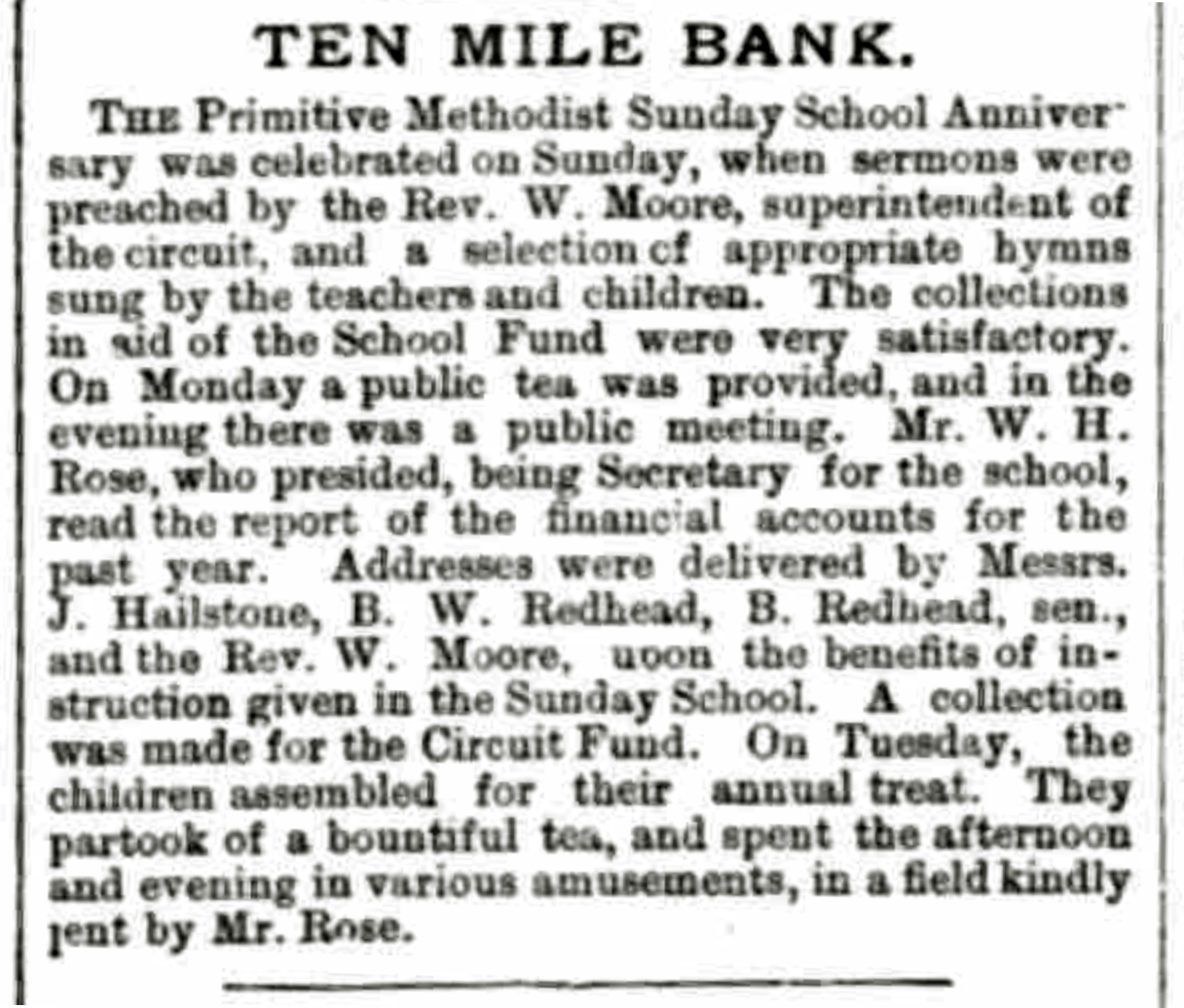 People's Weekly Journal, June 4, 1881
People's Weekly Journal, June 4, 1881
Another article from April 1881 details a Good Friday service attended by about 80 persons. If this is accurate the population of the village must be been somewhat larger than it is today. What is particularly interesting in this article is that it lists serval of the names of people living in the village at that time. We see familiar names including; Akred, Brundle, Coates, Cossy, Driver, Hailstone, Hall, Leflay, Redhead & Rose.
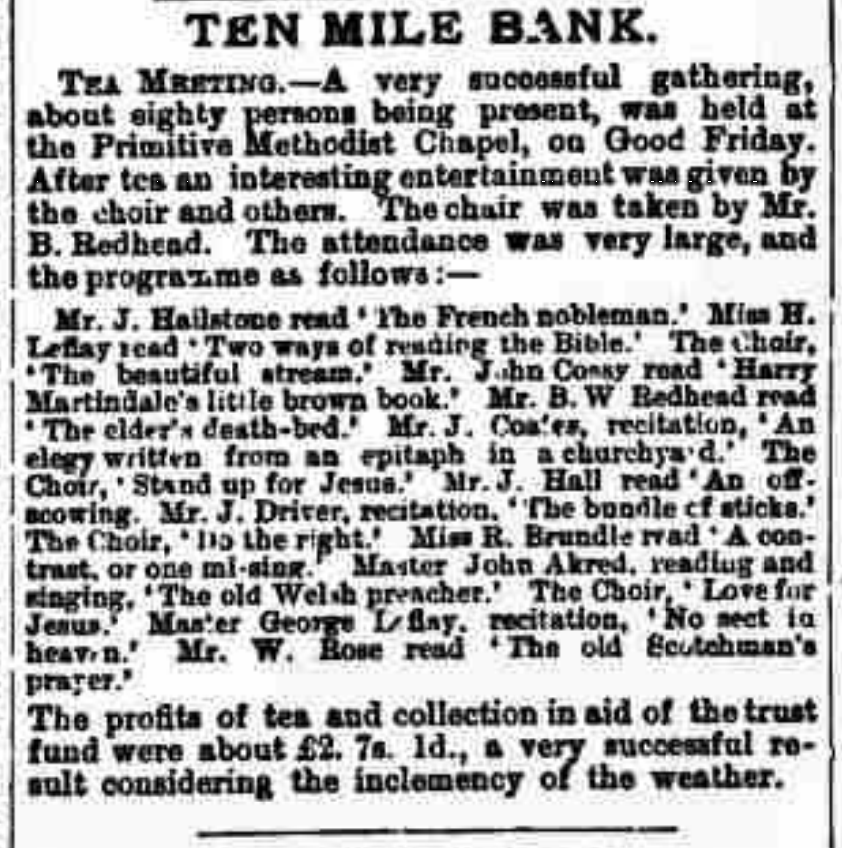 Norwich Mercury, April 23, 1881
Norwich Mercury, April 23, 1881
1896
This article from the Thetford and Watton Times, April 1896 refers to the Primitive Methodists holding a sale of work in the school-room. But where is this? Could it be what is now the village hall? Familiar surnames are mentioned again.
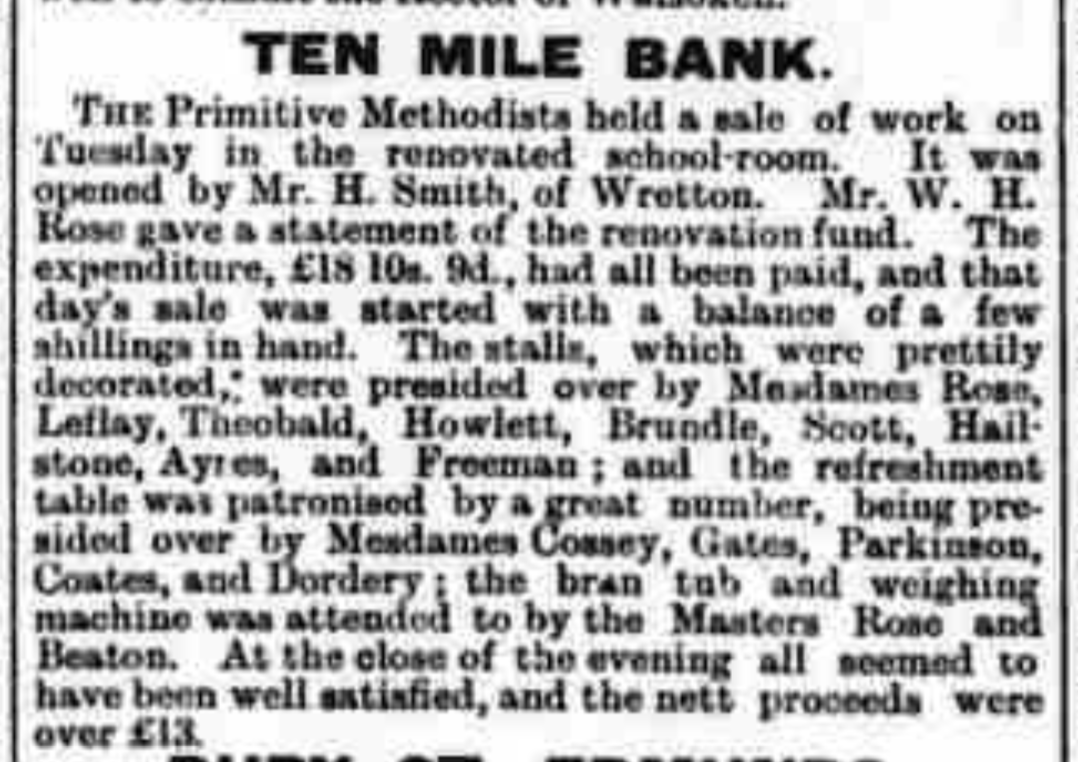 Thetford and Watton Times, April 25, 1896
Thetford and Watton Times, April 25, 1896
1919
The following are extracts from the 1919 article in the Christian Messenger by Rev. W.H. Curtis.
Here is a resolution passed at Quarterly Meeting held at Ten Mile Bank, and shows our fathers had a keener scent for Sabbath-breakers than for Sunday dinners: "That a letter be written to Bro. M——, of March, informing him that this meeting disapproves of his baking dinners on the Lord's Day, and that unless he discontinues the practice he will in future be removed from his official capacity with us." We all say : “Hear, hear” to that.
At Ten Mile Bank we have a village cause known far and wide for its prosperity. The chapel seats two-hundred-and-fifty. A large congregation in the morning and a chapel full at night is the usual order of things. It has a nice Pipe Organ, and in other respects is a well-furnished church. Mr. W.H. Rose, though an invalid, is still greatly interested in our work, whilst Mrs. Rose is one of the Connexions notable missionary collectors, having for many years handed about £5 to the deputation as a result of her persistent labours.
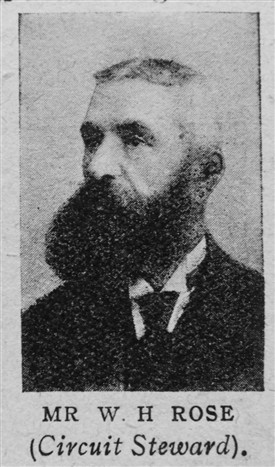
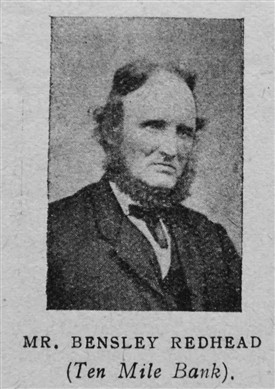
Mid 1900s
The congregation sizes were most likely in a steady decline by the mid 1900s. The image of the interior of the chapel shown here was probably taken towards the end of chapel's operational life. The lamps hanging down from the ceiling seem to be electric, whereas the ones upstanding are oil or gas. The message on the wall indicates a proud stance.
The chapel closed completely sometime in the 1970s. Most likely due to numbers falling to an unsustainable level.

2012
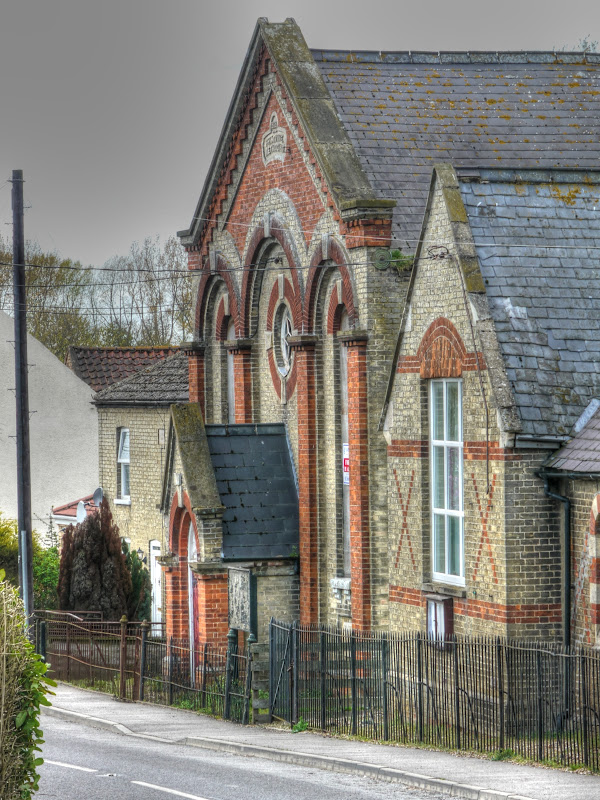
The Chapel is advertised for sale with a guide price of £50,000 - £60,000. Described as having a Main Hall, Ante Room and Outside Closet.
The chapel has since been demolished and the site currently remains up for sale with planning permission to build a property.